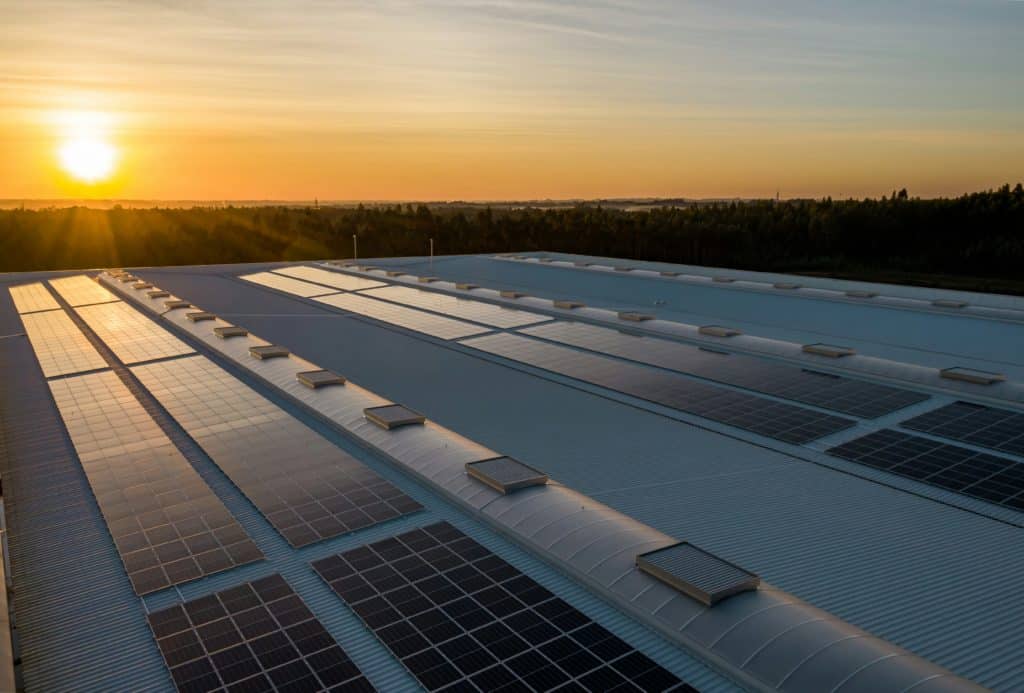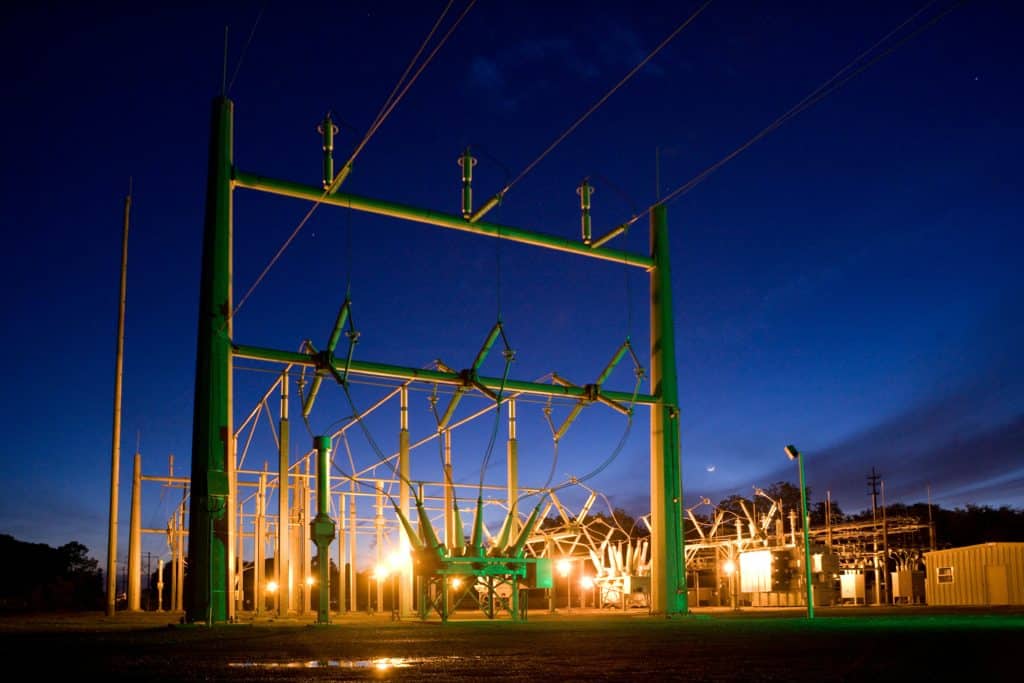Climate action on Energy
>> SETTING THE OBJECTIVES
in-Depth Resources
Each institution should set its own specific actions to develop and implement its Action Plan.
The selected actions will allow the definition of your individual Action Plan to meet tailored targets by Year 1, Year 3 and Year 5 of your climate Pathway.
THE OBJECTIVES - Click on the bullet points for quick access

Objective 1
Deploying sustainable energy systems
- Decarbonizing heating and cooling systems
- Developing energy autonomy of building(s) with renewable sources
- Favouring recycled and bio-sourced building materials
1.1 Decarbonizing heating and cooling systems
Heating and cooling are significant contributors to energy bills. Traditional heating and cooling systems often rely on non-renewable energy sources, resulting in significant greenhouse gas emissions and increased energy costs. District heating systems offer energy-efficient, scalable, and flexible solutions for reducing carbon footprint compared to gas or fuel heating systems by integrating renewable energy sources, utilizing combined heat and power plants, and optimizing heat generation and distribution, which results in lower emissions and environmental impact.
- Replace gas and/or fuel for heating with District Heating (e.g. GeniLac and/or Geniterre).
- Replace gas and/or fuel for heating with heat pumps.
- Replace electric heating with District heating and/or heat pumps.
1.2 Developing energy autonomy of building(s) with renewable sources
With photovoltaic performance improving and reduced costs increasing, clean and renewable energy can be produced on site. Our buildings have a high potential for solar power generation to supply themselves with daily energy consumption. It is possible to make your building “Greener”. Start by measuring and evaluating your building’s solar potential.
- Measure the solar potential capacity of your building with online Geneva’s solar cadaster (SITG)
- Conduct an in-depth solar potential study of your building
- Install photovoltaic solar panels on your building’s roof and/or facades
- Install thermal solar panels on your building’s roof and/or facades
1.3 Favouring recycled and bio-sourced building materials
Recycled materials, such as reclaimed wood or recycled steel, help divert waste from landfills and minimize the need for resource-intensive extraction and manufacturing processes. Additionally, bio-sourced materials, like bamboo or cork, come from renewable sources that absorb carbon dioxide during growth. By choosing these sustainable alternatives, we can reduce the carbon footprint associated with traditional building materials and contribute to a more circular and environmentally responsible construction industry.
- When renovating or building new premises, favour the use of recycled or bio-sourced materials
- When insulating premises, favour the use of bio-sourced materials

Objective 2
Improving energy efficiency
- Improving building envelope
- Improving energy efficiency of equipments
2.1 Improving building envelope
The building envelope is vital for energy saving as it acts as a barrier to minimize heat transfer and air leakage between the interior and exterior environment. With proper insulation and high-performance windows, it reduces the need for excessive heating and cooling, resulting in lower energy consumption, cost savings, and a smaller carbon footprint. A well-designed envelope enhances indoor thermal comfort while effectively reduces potential energy waste.
- Replace broken windows.
- Placing taping joints on old windows, either by keeping some joints open or by organizing ventilation in parallel.
- Place automatic closing systems on doors, install airlocks.
- If building is air-conditioned or if building is not air-conditioned but with overheating in the summer : install outdoor solar protections.
2.2 Improving energy efficiency of equipments
We use a lot of electrical equipments in our daily life. These equipments are essential, but they might consume much more energy than necessary. Excessive unused capacity, idle operation, and low energy efficiency all lead to energy waste. By selecting products with higher energy efficiency, rationally programming the operating system, upgrading the old-fashioned hardwares, and by shifting behaviours and methods to use the equipments, the energy consumption of various electrical equipments in the building can be effectively reduced.
- Collective kitchen equipment
- Cooking station : Replace direct electric hobs by induction hobs; Implement a cooking schedule to avoid using hot cabinets for storage after cooking; Size cooking equipment according to real needs.
- Washing station : Postpone the start of the wash to off-peak hours (if possible).
- Refrigeration: Heat recovery (compressor) and /or optimization of functioning mode; Reduction of capacity /of use.
- Elevators
- Control the ventilation rate of the elevator shaft.
- Install an energy recovery system during braking.
- IT Equipment
- Replace mechanical hard disks (HDD type) with hard disks (SDD type).
- Raise the cooling temperature of the server rooms.
- Regulate the quantity of air distribution by variable regulation systems (frequency variation).
- Laundry room (washing/drying)
- Choose equipment with an A or A+ energy label.
- Choose equipment with an A or A+ energy label.
- Connect preferably laundry equipment to a heat pump.

Objective 3
Reducing energy services demand
- Reducing energy consumption for heating and cooling
- Reducing electricity consumption
- Reducing embodied energy and indirect GHG emissions for new and renovated buildings
- Reducing energy consumption for sanitary hot water, air conditioning and ventilation
3.1 Reducing energy consumption for heating and cooling
Buildings are currently responsible for 39% of global energy related carbon emissions: 28% from operational emissions, from energy needed to heat, cool and power them. In Geneva, buildings occupied by firms and residents account for half of local CO2 emissions.
A comfortable indoor environment is crucial for people’s physical and mental well-being, as well as their work and daily life. Heating accounts for two-thirds of a household’s energy needs. Unfortunately, in current heating and cooling systems, a significant amount of energy is being wasted, for example, during unoccupied periods or in unoccupied spaces. There is great potential to reduce this excessive energy usage through practical technological design or behavioural changes.
Proper pipeline insulation helps minimize heat transfer, preventing the escape of warmth during winter and pipe heating during summer. Programmable thermostats allow users to set specific temperature schedules, reducing energy usage when spaces are unoccupied or adjusting settings based on occupancy patterns.
- Reduce heating overnight and weekends, vacations, day-offs, etc. (if necessary, a timer or optimiser can be placed)
- Insulate pipelines in non-heated spaces
- Correct heating curves setting
- Reduce burner power when oversized
- Place thermostatic control valves in all room
3.2 Reducing electricity consumption
In the office, the main electricity consumption comes from lighting and electronic office equipment such as computers and printers. By replacing with more energy-saving and environmentally friendly products, and turning off the power in time when no one is using it to reduce unnecessary loss, we can effectively reduce power consumption in the office. Small daily things can also make an important difference.
- Replace fluorescent tubes with LED tubes
- Install timers in intermittently used rooms (bathrooms, corridors, parking space, etc.)
- Break down the network by homogenous lighting zones : in a room, independant management of lighting that are close to a window.
- Turn off all computers at night
- Reduce number of printers (e.g. by concentrating them in one zone/floor instead of per office)
3.3 Reducing embodied energy and indirect GHG emissions for new and renovated buildings
Buildings are currently responsible for 39% of global energy related carbon emissions: 11% from materials and construction. The construction industry remains still quite often climate-unfriendly. Carbon emissions released before the built asset is used, what is referred to as ‘upfront carbon’, will be responsible for half of the entire carbon footprint of new construction between now and 2050, threatening to consume a large part of our remaining carbon budget.
Therefore the built environment sector has a vital role to play in responding to the climate emergency, and addressing upfront carbon is a critical and urgent focus.
- New buildings
- Extend building life time
- Reduce construction elements surface by adopting compact building design
- Choose the lightest insulation materials possible
- For indoor walls, favor cement bricks or sand-lime bricks instead of clay bricks. For light walls, choose wood studs rather than metal profiles.
- Transformations and renovations
- Consider different lifetimes of different building’s elements in long term works planification
- When renovating, consider that adding new elements and new materials will increase the building’s embodied energy
- Favour simple materials of local origin and for which development didn’t consume a big amount of energy
3.4 Reducing energy consumption for sanitary hot water, air conditioning and ventilation
Buildings are currently responsible for 39% of global energy related carbon emissions: 11% from materials and construction. The construction industry remains still quite often climate-unfriendly. Carbon emissions released before the built asset is used, what is referred to as ‘upfront carbon’, will be responsible for half of the entire carbon footprint of new construction between now and 2050, threatening to consume a large part of our remaining carbon budget.
Therefore the built environment sector has a vital role to play in responding to the climate emergency, and addressing upfront carbon is a critical and urgent focus.
- Hot water
- Improve insulation of sanitary hot water tank panels
- Equip sinks’ and showers’ taps with timeouts (e.g. push buttons)
- Incitivize building users to limit hot water use (favor cold water)
- Install flow rate reductors on hot water taps.
- Air conditioning
- If fresh air input is integrated in the air conditioning system, adapt fresh air flow rate to users’ needs
- Limit operation of humidification to ≤40%
- Clean air condensators (air, hybrid or water condensators) at least once a year
- Equip rooms characterised by variable occupation with adjustable vents and with presence detectors or with CO2 sensors.
- Ventilation
- Stop ventilation outside occupation hours
- Stop humidification when outdoor temperature exceeds 8°C
L’énergie grise dans les nouveaux bâtiments
Environmental impact assessment (EIA). An EIA is required for any planning, construction or modification project that may have a significant impact on the environment.






